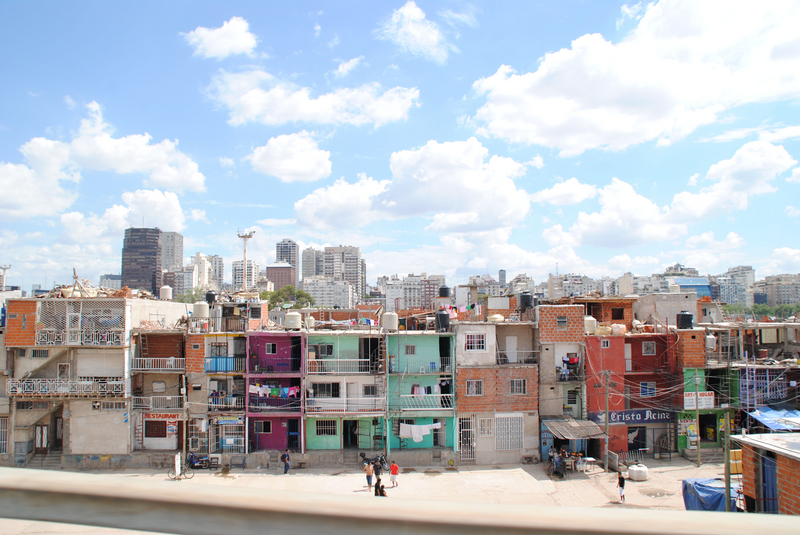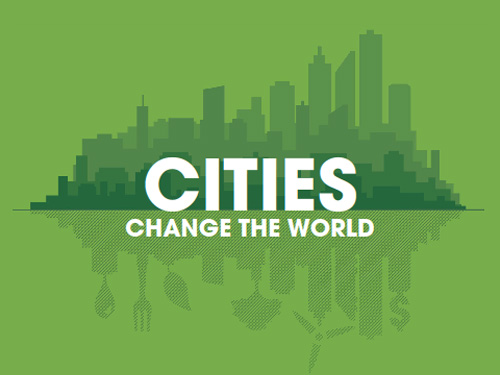Paris, London, New York, Tokyo, Beijing, Seoul, São Paulo… very large cities lie at the heart of tensions between economic globalisation and local needs, competitive efficiency and territorial justice, growth and ecological sustainability, increased density and urban cooling, pay packets and the apocalypse. Often said to be ungovernable, they nevertheless develop plans and strategies on all scales, initiate large structural projects, and lead innovative pilot experiments.
Established global cities (New York, Tokyo, Paris…) and giant emerging megacities1 (Mexico City, Delhi, Shanghai…) have more in common than with their respective surroundings. The differences between northern and southern cities are becoming less clearcut. Since the early twenty-first century, large cities in developed countries have entered an intense cycle of urban redevelopment, stimulated by international competition. Their cores are intensifying, while growth on their outskirts is generally slowing down, with some exceptions such as airport and logistics areas. The form of large cities is increasingly being determined by the financial strategies of private investors and the scarcity of available land, which has led to a strong tendency towards densification and verticalisation, sometimes to the detriment of the landscape, quality of life, and social and territorial balance. Long-term planning still plays a part, in particular to preserve natural areas and to manage growing investment in transport (airports, high-speed trains, suburban trains, metros). However, since the crisis of 2008, long-term planning has tended to give way to area-based urban planning, designed to offer investors short-term profitability. Public authorities sometimes also encourage land and property speculation: in the Middle East, Africa, China and even Europe, ghost cities and neighbourhoods are springing up, disconnected from local demand.
Competitiveness and development
In a context of global competition exacerbated by economic deregulation, large cities are rivals before being allies. To counter Shanghai and Singapore, in 2011 Tokyo created a low-tax zone at its core, with less stringent planning rules, to attract Asian company headquarters and research centres. But the aging population is making the future of the world’s largest megalopolis uncertain (read article by Hiroo Ichikawa). Beijing’s strategy is geopolitical: its new “ Master Plan 2035” seeks to ensure its pre-eminence with respect to Shanghai and the Greater Bay Area2, and to embody the vision of a powerful China. To cope with acute problems of congestion, pollution and water supply, Beijing wants to cap its population at 23 million, by forcing business and workers not connected to “capital functions” to move to new towns far away (read article by Wang Fei et al., and box by Jérémie Descamps). Chinese and international experience shows that the chances of success for this type of policy are low.
Density and verticality: “no limits?”
One of the challenges facing attractive cities is being able to anticipate their space requirements and orient growth where it is most meaningful in terms of transport and territorial organisation, while limiting land artificialisation and its energy and climate impacts. The responses provided for this impossible equation vary from city to city. Hong Kong is growing according to a process of hyper-density related to a real estate value-capture system around new metro stations: though economically effective, this model is reaching its limits in terms of quality of life and housing costs (article by Alain Chiradia and Louie Sieh). Like Singapore and Copenhagen, Hong Kong wants to build on land reclaimed from the sea, at the risk of impacting marine ecosystems. The Hong Kong model has inspired Vancouver, which is proud of being one of the “world’s most liveable cities”, but at the expense of excluding low-income families. In many cities such as Singapore, Moscow or Dubai, waterfronts are prime areas for vertical urban development designed to attract international investors. London is also investing in tall buildings (article by Peter Murray), but some criticise its transformation into a Dubai-on-Thames”. According to the London Plan, development density and scale relates to the level of public transport accessibility, with the help of instruments unheard of in the Paris Region planning system, such as the “density matrix” and the “town centres network” hierarchy. But private developers tend to negotiate higher densities, running the risk of making some on the new districts unliveable and unaffordable. In New York, planning regulations are set zone by zone, and developers can negotiate density bonuses or purchase air rights from neighbouring buildings. The result is a proliferation of giant luxury towers that escape public control. Densification sometimes meets with opposition, as in Berlin: after a citizens referendum in 2012, the city had to give up on the idea of developing the fringes of Tempelhof Airport, which have since become a large nature and leisure park. The densification debate should take into account long term development, urban landscape, heritage, the social mix, and related urban amenities.
Regional plans and strategic projects
Not all large cities have a long-term regional or metropolitan plan. The London Plan extends no further than London itself, leaving the State and the 156 councils of southeast England to manage the impacts of the capital’s attractiveness (article by Duncan Bowie). In the capital regions of Tokyo and Seoul, central states are also manning the controls. In New York, the Regional Plan Association, a non-profit civil organisation, has taken the initiative to lay out the Fourth 2040 Regional Plan for a region split between three states, 31 counties, 782 municipalities and many failing institutions: this non-prescriptive plan draws its legitimacy from its ability to mobilise key stakeholders around shared objectives (article by Juliette Michaelson). Combining planning and strategic projects is crucial to determine planning orientations: the Gauteng 2030 scheme relies on key projects such as the Pretoria-Johannesburg-Ekurhuleni rail corridor to structure a fragmented African metropolis (read article by Alan Mabin and Rachid Seedat). Latin American cities cope with scant resources by connecting affordable transport to integrated urban and social regeneration projects (article by Andrés Borthagaray and Thomas Massin). The (Wider) Grand Paris development relies on complex public management, a range of planning tools, and innovative projects. Key issues including: increasing the density of neighbourhoods around railway stations versus the preservation of suburban housing estates; “zero land artificialisation” policy versus continued urban sprawl; building tall buildings versus preserving heritage landscapes; urban cooling; east/west balance and the heart of the city/the outer suburbs; the future of the expressways, of suburban shopping centres, of industrial areas, etc. Underlying current debates is the definition of a sustainable development model for 2040-2050 (article by Léo Fauconnet and Paul Lecroart).
Climate change and social inclusion strategies
Since 2010, the response to climatic and environmental challenges has forced its way into strategies, spearheaded by cities such as Copenhagen and Vancouver. All adopt plans for reducing CO2 emissions by 2030, with ambitious carbon-neutrality goals to be achieved by 2040 (Stockholm) or 2050 (Berlin). Numerous pilot projects are emerging in all domains: energy conversion, eco-mobility, eco-planning, bioclimatic renovation, bio-sourced materials, water recycling, planting, “green growth”, etc. Responding to the housing needs of low-income households and the middle classes is also becoming a priority. Led by city mayors, these strategies may have limited influence when they are restricted to the municipal level, but broader, more integrated approaches are being developed (Berlin, Barcelona, Grand Paris). Nonetheless, cities have not ceased developing attractive facilities (shopping centres, private universities, opera houses, museums, arenas, luxury hotels, marinas, casinos), nor expanding their roads and airports, somewhat contradicting the energy frugality announced in the plans. There is still a long way to go to ensure perfect consistency between planning models, socio-economic processes, and carbon-neutrality goals. Transition strategies are all the more likely to succeed when public authorities maintain tight control over the instruments of spatial transformation (planning regulations, land ownership, urban redevelopment, delivery vehicles, etc.) and major urban utilities and services that must work in synergy (energy, water, sewage, waste, networks, etc.).
Paul Lecroart, Senior Urbanist, Léo Fauconnet, Political Scientist and Urbanist,
and Maximilian Gawlik, Landscape Architect and Urbanist, L’Institut Paris Region
1. Megacities are urban agglomerations with a population of above 10 million people.
2. The Pearl River Delta is home to Hong Kong, Shenzhen, Guangzhou (Canton), Macao, and other large cities.



